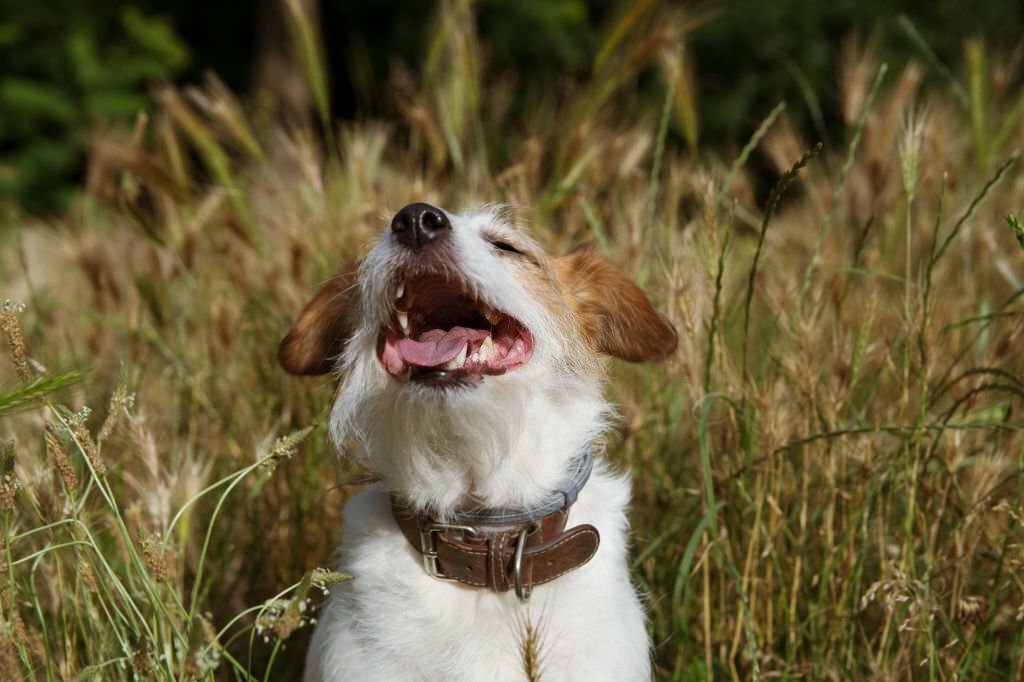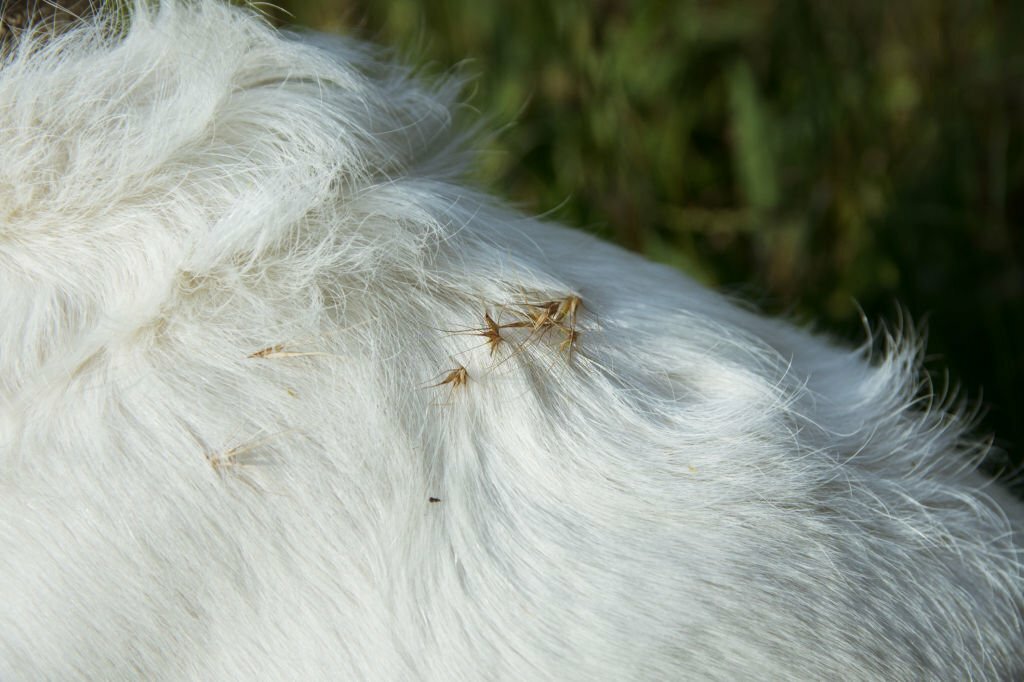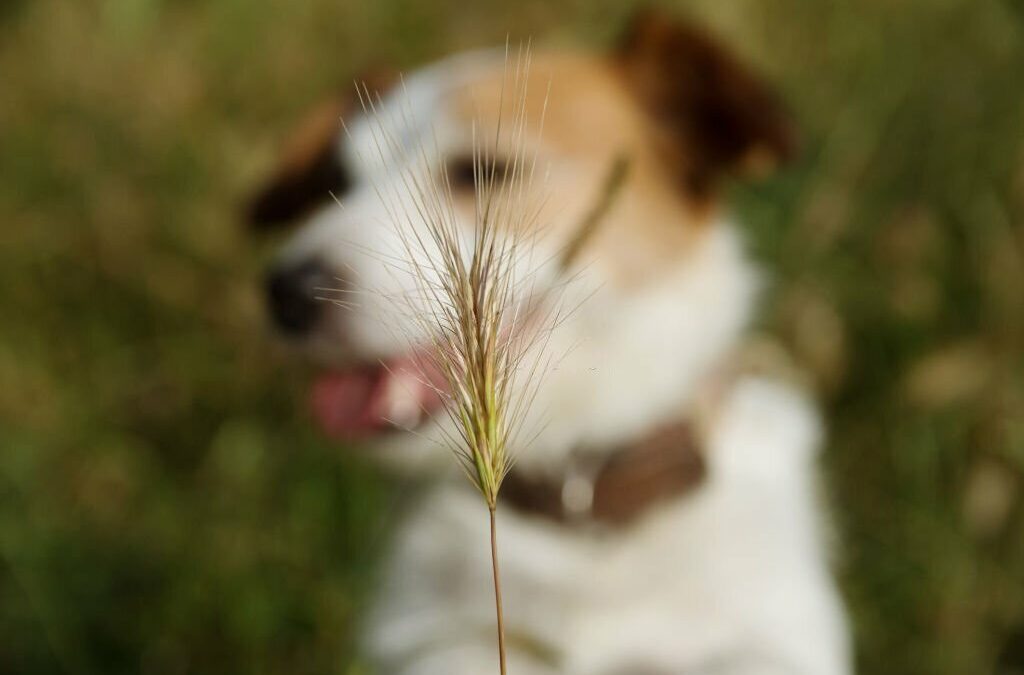As spring rolls into summer, nature awakens with vibrant colours and lush greenery. While this transformation is a sight to behold, it can also pose risks to our furry friends, especially dogs.
One of the most significant hazards during this season is the prevalence of grass seeds and their potential to cause grass seed abscesses. In this blog, we’ll delve into the impact of grass seed season on dogs, the risks associated with grass seed abscesses, how to spot them, and crucial prevention measures to keep your canine companion safe.
The Season of Grass Seeds
Spring and early summer are the prime seasons for grass seeds. These tiny, sharp-edged seeds are found in a variety of grasses, including common ones like foxtails, barley grass, and cheatgrass. As these grasses mature, the seeds become loose and easily dislodged, creating an environment ripe for encounters with dogs.
The Impact of Grass Seeds on Dogs
Grass seeds might seem harmless, but they can wreak havoc on your dog’s health if not dealt with promptly. Here are some of the most common problems they can cause:
- Skin Irritation: Grass seeds have a sharp, pointed shape that can easily pierce a dog’s skin. They often get caught in the fur, between the toes, or inside the ears, leading to irritation, redness, and discomfort.
- Infections: Grass seeds can carry bacteria, which may lead to skin infections if they penetrate the skin. Infected areas can become painful and swollen, and the dog may start to lick or scratch excessively.
- Grass Seed Abscesses: Perhaps the most serious complication, grass seeds can burrow deeper into the body, causing abscesses. Abscesses are painful, swollen pockets of pus that require surgical intervention to remove.

Spotting Grass Seed Abscesses
Recognising grass seed abscesses early is crucial for effective treatment. Here are some signs to watch out for:
- Limping or Lameness: If a grass seed has penetrated a paw or leg, your dog may limp or favour one limb.
- Localised Swelling: Look for unusual swelling or lumps on your dog’s body, especially in areas prone to grass seed entry, such as paws, ears, eyes, and nostrils.
- Excessive Licking or Scratching: Dogs with grass seeds embedded in their skin often respond by licking, scratching, or biting the affected area more than usual.
- Pus or Discharge: An abscess typically produces pus or a foul-smelling discharge. Check for any signs of oozing or unusual fluids around the affected area.
Preventing Grass Seed Abscesses
Prevention is always better than cure. Here are some strategies to keep your dog safe during grass seed season:
- Regular Grooming: Brush and inspect your dog’s coat frequently, paying close attention to paws, ears, and other susceptible areas. Remove any visible grass seeds promptly.
- Trimming: Keeping your dog’s fur trimmed, especially around the ears and between the toes, can reduce the chances of grass seeds getting trapped.
- Avoid Tall Grass: When walking your dog, try to avoid areas with tall, seed-bearing grasses. Stick to well-maintained paths and open spaces.
- Protective Gear: In high-risk areas or if your dog is prone to grass seed abscesses, consider using protective gear like dog booties, ear covers, or a snood to shield the eyes and ears.
- Consult Your Vet: If you suspect your dog has a grass seed abscess or if you’re concerned about prevention strategies, consult your veterinarian. They can provide guidance tailored to your dog’s specific needs. You can contact our team on 9369-1822

The Damage Grass Seeds Can Do
Grass seeds may appear harmless at first glance, but they can cause a range of issues for your beloved canine companion. From skin irritation and infections to painful abscesses, the damage they can do should not be underestimated. By being vigilant during grass seed season and taking preventive measures, you can help ensure your dog enjoys the joys of spring and summer without the risk of grass seed-related complications.
Conclusion
As the seasons change and the grasses come to life, it’s essential for dog owners to be aware of the potential dangers posed by grass seeds. By understanding the impact of grass seed season, recognising the signs of grass seed abscesses, and implementing preventive measures, you can help keep your furry friend safe and ensure they enjoy the outdoors to the fullest. Remember, a little extra care can go a long way in protecting your dog’s health and well-being during this vibrant time of year.

